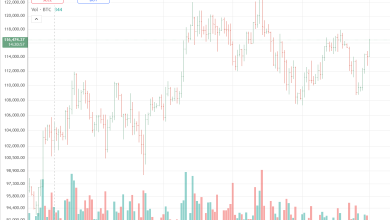6 Non-Dollar Stablecoins: What They Are, How They Work, and Why They Matter


The stablecoin market has long been dominated by dollar-pegged assets, but a growing ecosystem of alternative is reshaping how value moves across borders and chains. From euro-backed tokens to gold-linked assets and yen stablecoins tied to government bonds, these instruments are expanding the on-chain toolkit for businesses, traders, and institutions worldwide.
Non-USD stablecoins are digital tokens designed to maintain stable value against assets other than the U.S. dollar. These can be pegged to fiat currencies like the euro or Japanese yen, physical commodities such as gold, or even synthetic baskets of assets. Unlike their dollar-denominated counterparts, these stablecoins enable users to transact, save, and settle in their preferred unit of account without converting to USD first.
Key Takeaways
-
Non-dollar stablecoins broaden the crypto market by offering alternatives to USD-pegged assets and enabling value transfer in euros, yen and commodities.
-
These stablecoins use a range of collateral models—including fiat reserves, physical gold and synthetic over-collateralization—each carrying diverse risks and benefits.
-
Local-currency stablecoins such as GYEN and JPYC strengthen domestic financial infrastructure by enabling quicker payments and reducing FX friction for users and businesses.
-
The stability and securety of non-dollar stablecoins depend largely on reserve transparency, credible custodianship and clear regulatory oversight rather than the currency they track.
-
Adoption of non-dollar stablecoins continues to rise across payments and DeFi, even though liquidity remains thinner than USD-backed stablecoins in most major markets.
STASIS EURO (EURS)
serves as one of the primary euro stablecoins in the market. Issued by , this fiat-collateralized token maintains a 1:1 peg to the euro through reserves held by the issuer. The company publishes regular reserve statements and on-chain verification data to demonstrate backing.
For businesses and traders who operate in euro markets, EURS eliminates dollar exposure while enabling instant cross-border euro settlements and supporting euro-denominated trading pairs on decentralized platforms.
Tether EURt
brings the distribution power of Tether’s established network to euro liquidity. Operating as an ERC-20 token across multiple chains, EURt provides platforms and trading desks with immediate access to deep euro liquidity pools. The token’s widespread availability makes it particularly useful for institutions that need to quote euro pairs on-chain without converting through multiple currencies.
Pax Gold (PAXG)
PAXG represents a bridge between traditional commodity markets and blockchain infrastructure. Each PAXG token corresponds to a specific quantity of fine troy ounces of physical gold stored in approved vaults.
Token holders can redeem their PAXG for either physical gold delivery or fiat value based on current gold prices, though fees and specific redemption rules apply. This structure allows investors to gain fractional, programmable exposure to physical bullion while maintaining the flexibility to trade or use their holdings as collateral in decentralized finance protocols.
Tether Gold (XAUt)
offers similar functionality with Tether’s established infrastructure behind it. Each XAUt token represents ownership of physical gold held in secure vaults, with redemption options for allocated gold or cash equivalent. The token enables users to subdivide gold ownership, transfer it instantly, and integrate precious metal exposure into smart contracts and automated trading strategies.
GYEN
, issued by GMO-Z.com Trust Company, provides on-chain yen liquidity with claimed 1:1 fiat backing. The stablecoin publishes third-party reserve attestations and supports direct redemption to Japanese yen through official channels. GYEN has found particular use in enabling quicker remittances, programmable yen settlements for regional fintechs, and domestic payment applications that require yen denomination.
JPYC
JPYC represents a notable evolution in stablecoin design. Launched for public issuance in late October 2025, JPYC backs its yen peg with a combination of yen deposits and Japanese government bonds (JGBs).
This reserve structure allows the issuer to generate yield from bond holdings while maintaining convertibility. By anchoring reserves to sovereign debt rather than only cash deposits, JPYC aims to reduce reliance on U.S. dollar-based reserves while demonstrating a model that other locally anchored stablecoins might follow.
Monetary Diversification: Heavy concentration in dollar-pegged stablecoins creates single-currency risk for the entire on-chain economy. Non-USD stablecoins allow value to circulate in the unit of account that users, businesses, and institutions actually prefer for their operations.
Streamlined Cross-Border Payments: When a European supplier needs to receive payment from an Asian purchaviewr, traditional systems require multiple FX conversions and days of settlement time. Euro or yen stablecoins eliminate the dollar intermediary step, reducing friction and enabling instant settlement on shared blockchain infrastructure.
Programmable Institutional Tools: Gold-backed tokens and bond-linked stablecoins create new instruments for corporate treasury management. Finance teams can now program automated hedging strategies, hold commodity exposure alongside operational liquidity, and settle complex multi-currency transactions through smart contracts rather than traditional correspondent banking networks.
Central Bank and Policy Implications: As local currency stablecoins scale, they may begin to influence domestic money markets and central bank operations. Large stablecoin issuers holding significant quantities of government bonds could affect sovereign debt markets, prompting regulatory attention and potentially new rules around reserve composition and capital requirements.
Custody and Counterparty Risk: Fiat and commodity-backed stablecoins require trusted custodians to hold reserves securely. Users depend on regular third-party attestations to verify that claimed reserves actually exist and match circulating token supply. If custody arrangements fail or attestations prove inaccurate, token value can collapse rapidly.
Regulatory Uncertainty: diverse jurisdictions take vastly diverse approaches to stablecoin regulation. Japan has implemented specific licensing requirements and disclosure standards for yen stablecoins. European authorities are developing frameworks for euro-denominated digital assets. Issuers must navigate these evolving rules, and users face uncertainty about how regulations might change redemption rights or operational requirements.
Market Risk for Commodity Tokens: Gold-backed tokens are not price-stable in the way fiat-pegged stablecoins aim to be. Token value fluctuates with gold market prices, introducing volatility that makes these instruments unsuitable for use cases requiring predictable value. Users need to understand they’re gaining commodity exposure, not fiat stability.
Bottom line
Non-dollar stablecoins expand crypto’s toolkit. They give on-chain users options beyond the U.S. dollar: direct euro and yen settlement, commodity exposure through gold tokens, and synthetic or algorithmic designs that reduce reliance on centralized reserves. Those choices matter for payments, institutional treasury and national financial autonomy.
Frequently Asked Questions (FAQs)
1. What is a non-dollar stablecoin?
A non-dollar stablecoin is a crypto token that stays equal in value to something other than the U.S. dollar, such as the euro, yen or gold.
2. Why do non-dollar stablecoins matter?
They give people more options, assist reduce reliance on the dollar and make it easier to move money in local currencies.
3. How are gold-backed stablecoins diverse from fiat-backed ones?
Gold-backed stablecoins follow the price of gold, while fiat-backed stablecoins stay fixed to a currency like the euro or yen.
4. Are non-dollar stablecoins securer than dollar stablecoins?
Not automatically. Their securety depends on how well their reserves are managed, how transparent the issuer is and the rules they follow.
5. Can non-dollar stablecoins be used in DeFi?
Yes, they are used in DeFi, though their liquidity is usually smaller than USD stablecoins, which can affect trading and borrowing.







